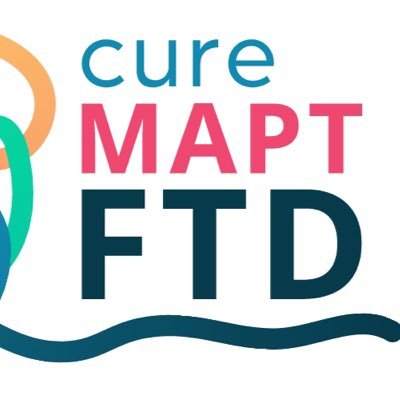
Eddie Lee
@TNRLab
Followers
3K
Following
5K
Media
154
Statuses
726
N^3 (Neuropathologist, Neuroscientist, Nerd), Translational Neuropath Research Laboratory, Co-Director Penn Institute on Aging
University of Pennsylvania
Joined December 2011
I am so grateful for this outcome, for the incredible colleagues who helped ensure this outcome @PennMedicine @PennNeurology @PennNSG @DanielYoshor @TNRLab, and for the opportunity to share our experience so others can identify and treat this rare neuroinflammatory emergency
31-year-old Shannon Cook was in a month-long coma, diagnosed with a rare, often fatal, brain disorder. Penn Medicine’s bold care decisions helped Cook survive and wake up just in time for Christmas. @PennNeurology
https://t.co/NIJyFcUoPF
2
4
10
All of this reflects the amazing work by first author, Boram Kim, and many of my collaborators @PennFTDCenter @PennAging @UPennCEET @PennNeurology @PennPathLabMed
0
0
3
There is ample evidence that PM2.5 exposure is harmful to human health. Improving air quality should be considered an investment in public health. It may be expensive, but so is dementia care.
1
0
2
The results were similar if we looked at different PM2.5 exposure timeframes (up to four years reported in the paper but we looked up to seven), and if we adjusted for socioeconomic status. We even modeled the uncertainty of PM2.5 values and the results remained significant.
1
0
0
In the subset of cases with CDR-SB scores, air pollution was associated with greater and faster cognitive and functional impairment. Using structural equation modeling, we found that the increased AD neuropathology mediated most of the effect of air pollution on cognition.
1
0
0
Using a validated spatiotemporal prediction model, we estimated PM2.5 exposure levels for over 600 autopsies done here at @PennMedicine over the last two decades. We found that increased PM2.5 exposure was associated with increased Alzheimer's disease pathology (amyloid, tau).
1
0
0
As air pollution has been linked to cognitive dysfunction and dementia, I wanted to know whether PM2.5 exposure was associated with increased Alzheimer's disease neuropathology at autopsy.
1
0
0
Despite my interest in genetic causes of dementia, I could not ignore my epidemiology colleagues who have been reporting significant decreases in dementia incidence over the recent past, something that cannot be explained by genetics.
1
0
0
Ambient air pollution (PM2.5) exposure is associated with increased dementia severity and more advanced Alzheimer's Disease neuropathology found at autopsy. https://t.co/FSKF8sahHe
2
2
9
Maybe my last Tweet? We found that shifting around polyubiquitin (using a chemical biology trick) results in altered #tau filament structure. The unstructured "fuzzy coat" of tau filaments matters!?! #AD #FTD #FTLD #cryoEM #Alzheimer #VCP #raredisease
https://t.co/3OIdoO4qzQ
biorxiv.org
Structurally diverse tau filaments form proteinaceous aggregates in a heterogeneous group of neurodegenerative diseases called tauopathies[1][1]. The factors extrinsic to the highly ordered core...
1
1
15
I've started writing a new grant in anticipation of the RFAs that are coming in 2025. "Synergistic effects of fluorinated water and lecanemab on autism risk in Alzheimer's Disease." 🤮🤯😖☠️
5
0
26
.@PennMedicine researchers receive $18M grant from @NIH/@NIHAging to investigate cognitive decline in Lewy body diseases ft. @alicechenp, @drdirwin (@PennNeurology), @TNRLab, Virginia Lee, Kelvin Luk (@PennPathLabMed) & Sharon Xie (@UPennDBEI) https://t.co/hOW7GxWb39
1
3
13
You ever meet someone who you know will help change the world just by existing...then you get to know them and see how much they're actively doing to make a #betterworld. Allow me to introduce you to my friend and inspiration for all of our upcoming #MAPT projects, Linde Lee🤩
Incredible trip to #AAIC2024! Thank you to @alzassociation for such an incredible week of learning and connection! Special shoutout to some of our biggest cheerleaders- @DrMariaALZ , @claire_e_sexton, @IgorCamargoF
3
16
72
Thrilling to give the #AAIC24 introductory plenary about how neuropathology synergizes with other disciplines. Nerve-wracking and exhilirating! Thank u @alzassociation scientific planning committee for giving me the honor of welcoming everyone to Philly. #inclusion #diversity
8
10
122
Well this was unexpected! We found that TDP-43 forms heteromeric amyloid filaments with a second protein, annexin A11, in the neurodegenerative disease FTLD-TDP Type C. Read the preprint here: https://t.co/Y5IxwpxwG2
3
68
224
Interesting that p.G38R and p.P75S, which are associated with annexinopathy, both flank the annexin A11 core sequence.
1
0
7
Amazing and beautiful cryoEM structure of heteromeric TDP-43 and annexin A11 filaments from FTLD-TDP Type C. I didn't know they found this when we published our paper on annexinopathy in FTLD-TDP Type C - the timing is crazy! https://t.co/jrhgeQlBHc
biorxiv.org
Neurodegenerative diseases are characterised by the abnormal filamentous assembly of specific proteins in the central nervous system[1][1]. Human genetic studies established a causal role for protein...
2
2
41







